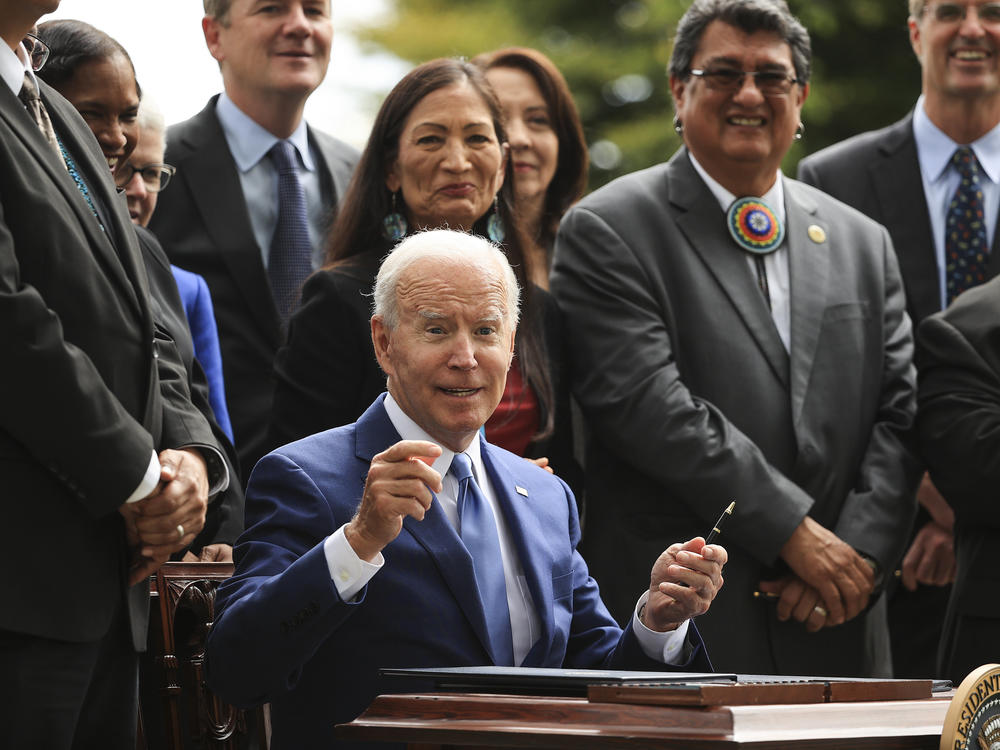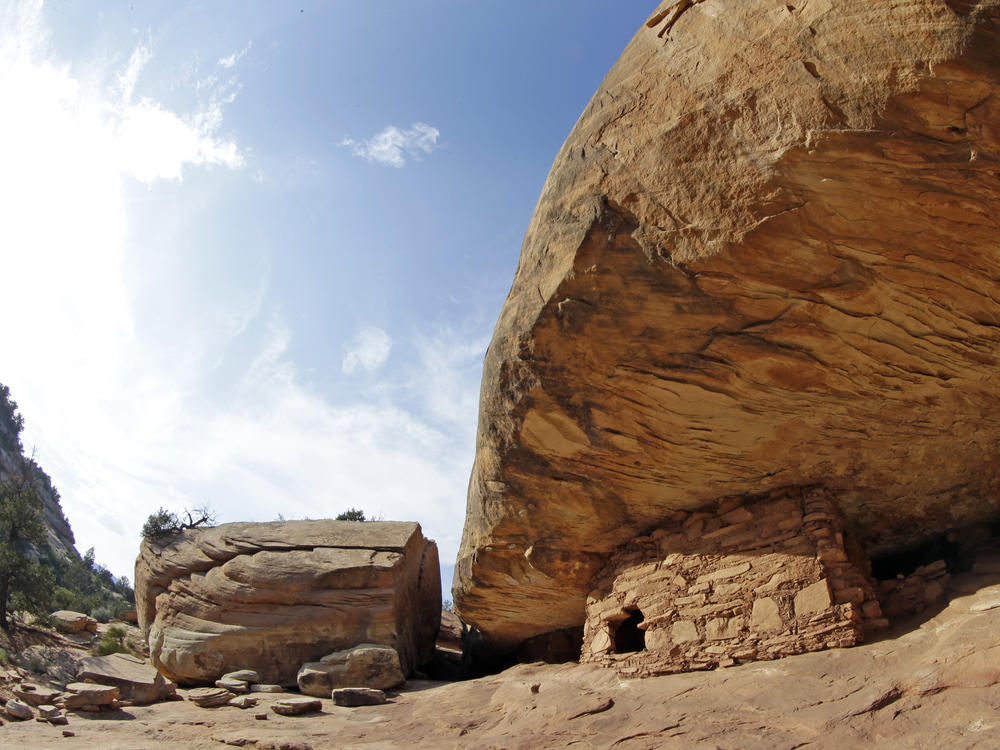Section Branding
Header Content
Biden restores protections for Bears Ears monument, 4 years after Trump downsized it
Primary Content
Updated October 8, 2021 at 3:23 PM ET
President Biden restored the boundaries of Bears Ears and Grand Staircase-Escalante monuments in southern Utah and added protections for the Northeast Canyons and Seamounts national monuments on Friday.
The Bears Ears National Monument, which was created by President Barack Obama shortly before he left office, will go back to 1.36 million acres, and Grand Staircase will be restored to 1.87 million acres.
The Northeast Canyons and Seamounts Marine National Monument, off the New England coast, was established by Obama in 2016 as the first marine national monument in the Atlantic Ocean.
"This may be the easiest thing I've ever done as president," Biden said in his remarks at the White House, where he signed three executive orders Friday afternoon.
Secretary of the Interior Deb Haaland called Biden's action to restore the land "profound."
"Bears Ears is a living landscape," Haaland said. "This is a place that must be protected in perpetuity for every American and every child of the world."
The president's actions write "a new chapter that embraces Indigenous knowledge, ensures tribal leadership has a seat at the table and demonstrates that by working together we can build a brighter future for all of us," she said.
Mark Maryboy a former Navajo tribal leader, told NPR that the Biden administration's reversal of the Trump order is cause for celebration, especially given the cultural connection tribes have with the land.
"These are some of the things that Navajos respect and consider. It's a part of their religion. And it's just like a church with the Anglo population," Maryboy said.
Shaun Chapoose, chairman of the Ute Indian Tribe, told NPR, "It was important that we protect our cultural identity.
"When you go outside here you have Hopi remnants, you have Navajo remnants, you have Zuni remnants, you have Ute remnants. ... We have an obligation to protect that," Chapoose said.
The legal battles may not be over
In 2017, then-President Donald Trump signed an executive order that dramatically downsized Bears Ears by 85% and cut Grand Staircase in half; it was the largest reversal of U.S. land monument protections in history.
The land is considered sacred to several Native tribes — including Navajo Nation, Hopi Tribe, Ute Indian Tribe, Ute Mountain Ute Tribe and Pueblo of Zuni. The area is rich in artifacts and full of ancient camping areas and burial grounds.
Environmental and tribal leaders sued the Trump administration, but that lawsuit has been on hold since Biden issued an executive order in January to look further into the matter.
But Biden's decision may not prevent future lawsuits.
Utah Gov. Spencer Cox, a Republican, has said his state would sue Biden if he restored the land unilaterally. Cox has instead advocated for handling the land's status through a bill in Congress.
"Can we give on some issues? Can they give on some issues? Can we come to a peaceful resolution of this so we're not fighting this battle every year for 20 years, 25 years?" Cox said.
But Chapoose said that Utah congressional leaders have only been supportive of a congressional bill if it's on their own terms.
"The state of Utah is probably going to have a tantrum," Chapoose said, "They're all for the congressional fix for when it's what they wanted to begin with. ... It's just the usual song and dance."
Interior Secretary Haaland has a key role on the monuments issue
In recent weeks, tribal leaders had been putting more pressure on Biden to take action to sign the executive orders he did Friday.
Haaland — the first Native American Cabinet secretary in U.S. history — visited southern Utah in April to survey both of the monuments there and meet with tribal leaders and elected officials in the state.
"How we manage public lands and national monuments is important — not just to the Tribes and ranchers and elected leaders and others who I met with this week, but to the many generations to come," Haaland said at the time.
She then submitted her report on restoring the lands to the president, as asked for in the executive order he signed in January. The Washington Post said that Haaland's recommendation in the report, which is not public, was for the president to restore the land.
Chapoose said having Haaland in the Interior Department made the conversations about the topic easier to navigate.
"I'm trying to put in context whole histories, or a whole understanding but put it in terms they don't quite comprehend," he said of former Interior secretaries from the Obama and Trump administrations.
"With [Haaland], she's lived it," he said.
Copyright 2021 NPR. To see more, visit https://www.npr.org.


